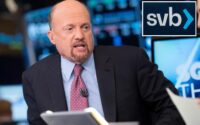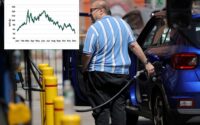US unemployment hits 53-year-low — 517K jobs added in January
US hiring was shockingly strong in January, with employers adding 517,000 jobs in a blockbuster result that could put pressure on the Federal Reserve to keep hiking interest rates.
The national employment rate fell to just 3.4% — its lowest level since May 1969 – in a sign that the job market remains extremely tight despite signs of a slowing US economy and a recent wave of layoffs in the tech sector.
Labor force participation jumped to 62.4% but is still well below pre-pandemic levels.
“Job growth was widespread in January, led by gains in leisure and hospitality, professional and business services, and health care,” the Bureau of Labor Statistics said in a release.
“Employment also increased in government, partially reflecting the return of workers from a strike,” the feds added.
The stunning figure came despite concerns that the Fed’s recent series of sharp rate hikes would result in major employment losses. At the same time, wage growth cooled in January, potentially alleviating concerns among Fed officials that the strong job market will fuel inflation.

Average hourly pay rose by 4.4% in January compared to the same month one year earlier. The number fell after a 4.8% year-over-year increase in December. On a monthly basis, wages increased by 0.3% from December to January, at a slightly slower clip than the 0.4% increase from November to December.
Ahead of the release, economists had expected payrolls to rise by just 187,000 in January. The increase followed a gain of 260,000 jobs in December. The unemployment rate was expected to hover at 3.6%.
President Biden said the strong result was proof that his “economic plan is working.”

US stocks initially turned lower after the January jobs report was published, with the Dow Jones Industrial Average, the tech-heavy Nasdaq and the broad-based S&P 500 all trading in negative territory. By late Friday morning, the Dow had pared earlier losses and turned positive.
“The undeniably strong report is what markets hope for coming out of a recession, but not what you want to see when expectations for the end of the Fed rate hike campaign is suddenly challenged by significantly stronger labor market,” said Quincy Krosby, chief global strategist at LPL Financial.
The strong jobs report could fuel anxiety among recession-wary investors who have called on the Fed to pause its inflation-fighting campaign. Inflation hovered at 6.5% in December – down from its decades-high peak in the middle of last year but still well above the Fed’s 2% target.
“We now think the Fed is more likely than not to hike in March,” Pantheon Macroeconomics chief economist Ian Shepherdson said in a note to clients on Friday.
Earlier this week, the Fed hiked its benchmark interest rate by a quarter percentage point, its eighth straight increase but its smallest in nearly a year. The rate-making Federal Open Market Committee, which meets again next month, said it expected “ongoing increases” in interest rates.

Fed Chair Jerome Powell noted that the “disinflation process” has begun but stressed that officials would need more signs of a sustained downturn in prices before they will consider a policy pause.


